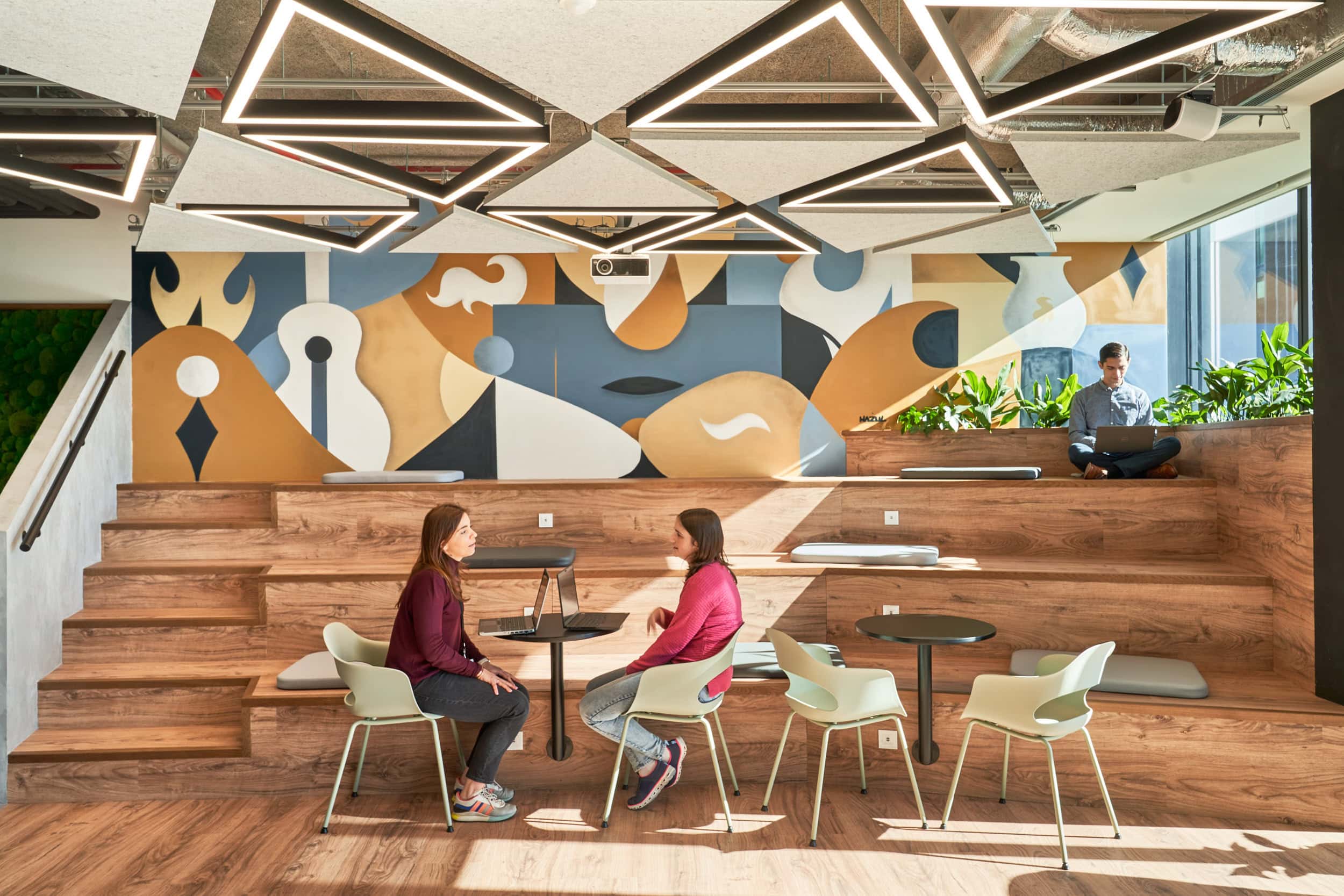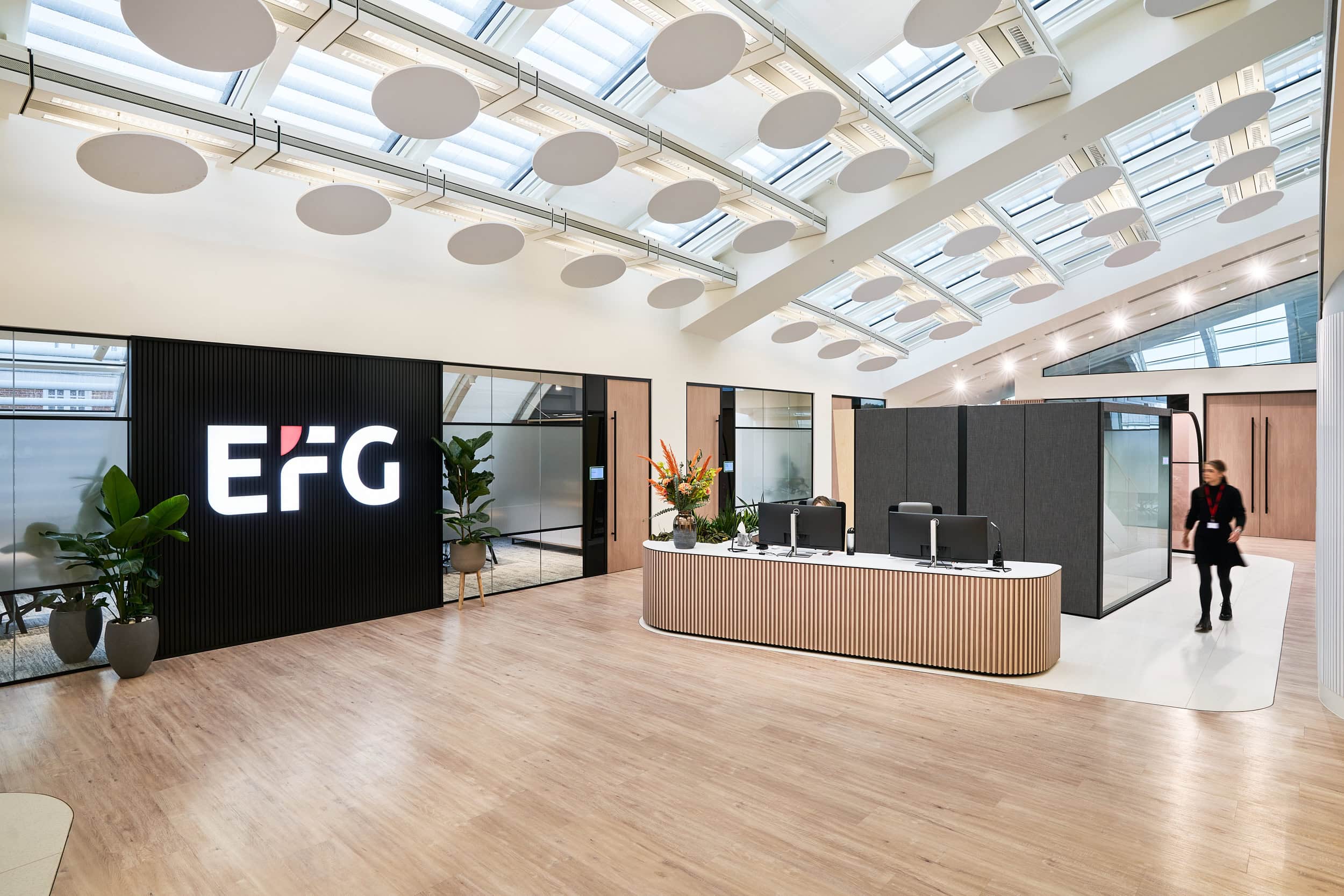ESG by design: 6 strategies to make workplace design and build ESG compliant
Our experts have crafted six strategies for sustainable workplace design, ensuring alignment with your workplace ESG standards.
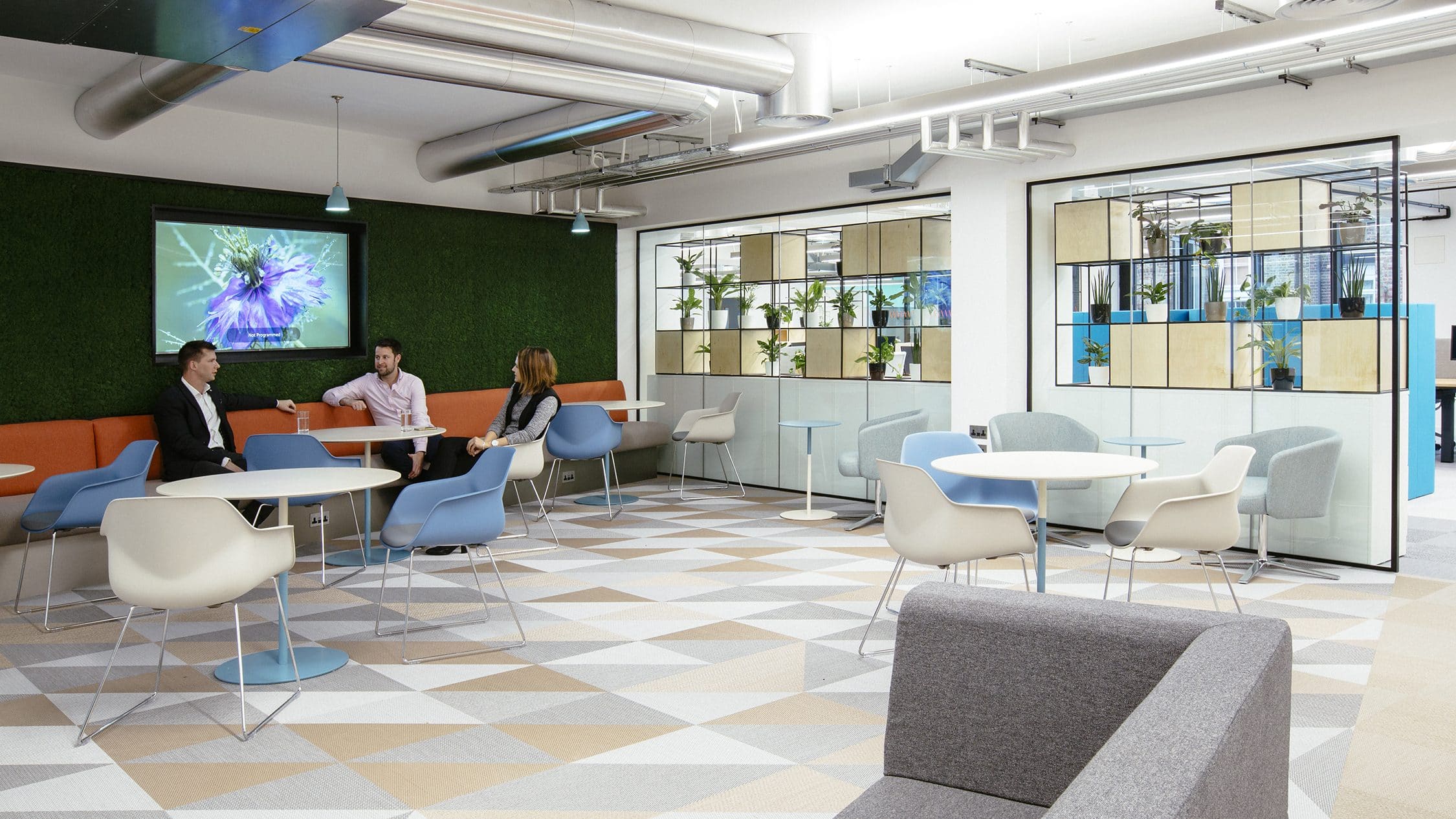
In today’s dynamic business landscape, Environmental, Social and Governance (ESG) criteria is gaining heightened recognition among many companies. Recognising and integrating ESG principles in the workplace transcend mere corporate responsibility; serving as a catalyst for enhancing brand reputation, attracting top talent and contributing to the long-term sustainability of organisations. A pivotal avenue for translating workplace ESG commitments into tangible results is through purposeful design and build projects.
Our workplace experts have developed six strategies aimed at aligning your office design and build with workplace ESG standards, ensuring a seamless fusion between the workspace and the overarching goals of your organisation. As we navigate the intersection of sustainability, inclusivity and governance in the workplace, these strategies will pave the way for a holistic and ESG-aligned professional environment.
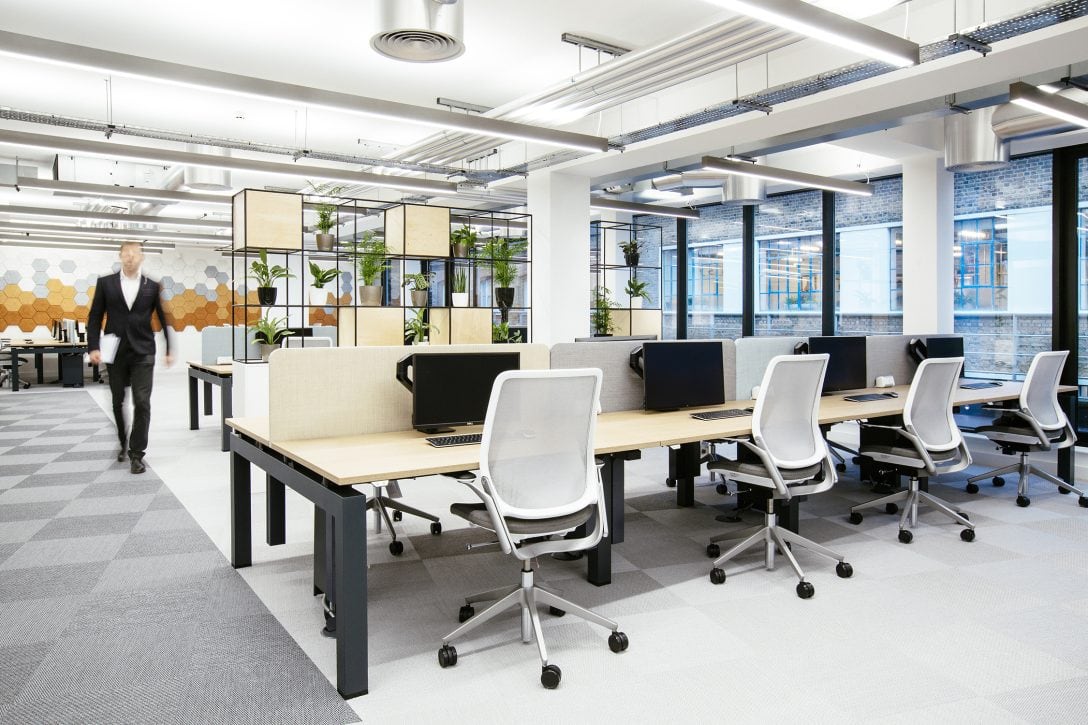
1. Sustainable materials and energy-efficient design:
Begin your workplace ESG journey by choosing sustainable materials and incorporating energy-efficient design principles. Opt for recycled and eco-friendly materials to reduce the environmental impact of your office build.
Additionally, prioritise energy-efficient lighting, heating and cooling systems to minimize energy consumption and consequently, carbon emissions. Integrating smart technologies can further enhance energy efficiency, creating a workspace that aligns with environmental sustainability goals.
2. Embracing green spaces and biophilic design:
Embrace the concept of biophilic design to create a workplace that fosters a connection with nature. Incorporating green spaces, indoor plants and natural light not only enhances the aesthetic appeal of the office but also contributes to employee well-being.
Greenery has been shown to improve air quality, reduce stress and increase overall job satisfaction. By integrating biophilic elements, your office becomes a healthier, more sustainable environment, aligning with the ‘S’ in ESG.
3. Inclusive and diverse spaces:
The ‘S’ in ESG encompasses social responsibility and inclusivity. Design your workplace to reflect a commitment to diversity and inclusion. Create spaces that cater to the needs of all employees, considering factors such as accessibility, ergonomic furniture and inclusive facilities.
A diverse and inclusive workplace not only aligns with social sustainability but also enhances team collaboration and creativity.
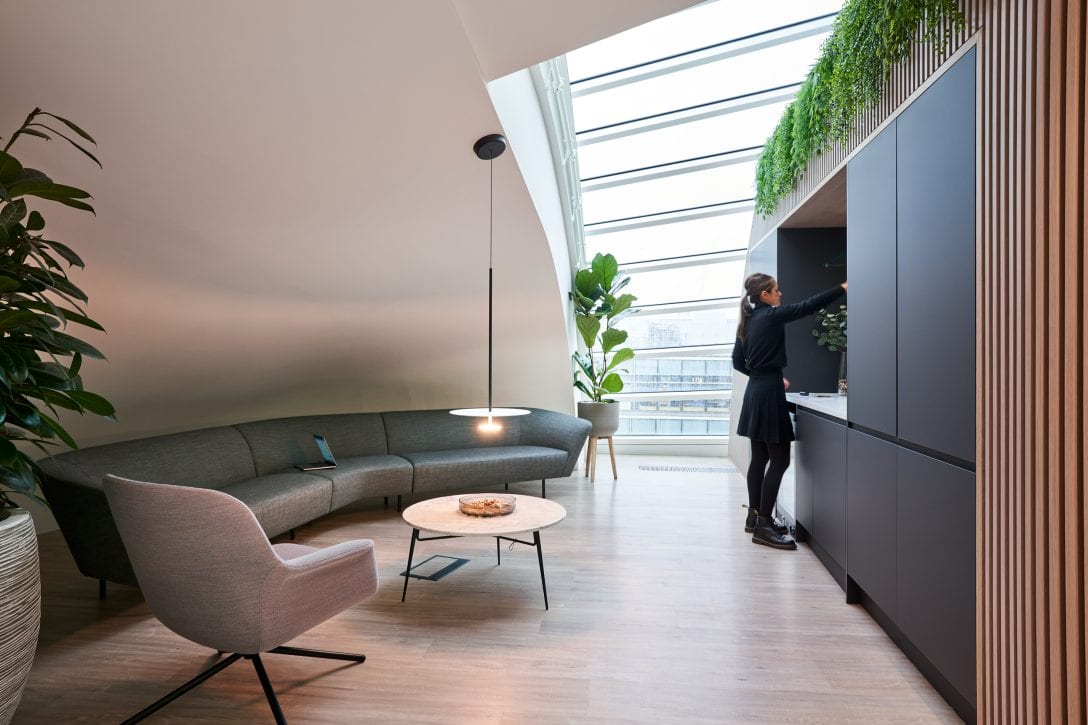
4. Flexible and remote-friendly design:
The modern workforce is increasingly valuing flexibility and remote work options. Acknowledge this shift by incorporating flexible design elements into your office space.
Create collaborative zones, quiet areas and remote-friendly infrastructure to accommodate diverse work preferences. A flexible workplace not only supports employee well-being but also reduces the environmental impact associated with daily commutes, aligning with both social and environmental sustainability goals.
5. Ethical supply chain and local sourcing:
ESG extends beyond the office walls to encompass the entire supply chain. When embarking on a sustainable workplace design and build project, our experts can help you in prioritising suppliers and materials that adhere to ethical and sustainable practices.
Our supply chain undergoes continuous checks on a routine basis, and the origin of materials and supply chain oversight are consistently monitored as part of our dedicated effort to deliver you with a space of low embodied carbon.
We can assist you in your decision making to opt for locally sourced materials to minimise transportation-related emissions and support local economies. By making conscious choices in your supply chain, you contribute to the ‘G’ in ESG by promoting governance and ethical business practices.
6. Waste reduction and circular economy:
Efficient waste management and a commitment to the circular economy are vital aspects of an ESG-focused workplace. By embracing a circular economy approach, your sustainable workplace design and build project aligns with the principles of environmental sustainability and responsible resource consumption.
At AIS 88% of waste arising from our sites is recycled. Meanwhile during the design phase we have state of the art technology in place that aids our designers with precise measurements and specifications to minimise errors, reduce waste and streamline the design process.
Workplace ESG integration and impact
ESG by design is a strategic imperative for businesses aiming to thrive into the future. By integrating these six strategies into your office design and build projects, you not only create a workspace that enhances employee satisfaction and productivity but also demonstrate a commitment to environmental stewardship, social responsibility and ethical governance. As organisations continue to evolve, workplace design becomes a powerful tool for aligning corporate values with tangible, impactful results in the realm of ESG.
Ready to transform your workplace? Start implementing these strategies today for a sustainable workplace design and ESG-aligned future. Get in touch.
